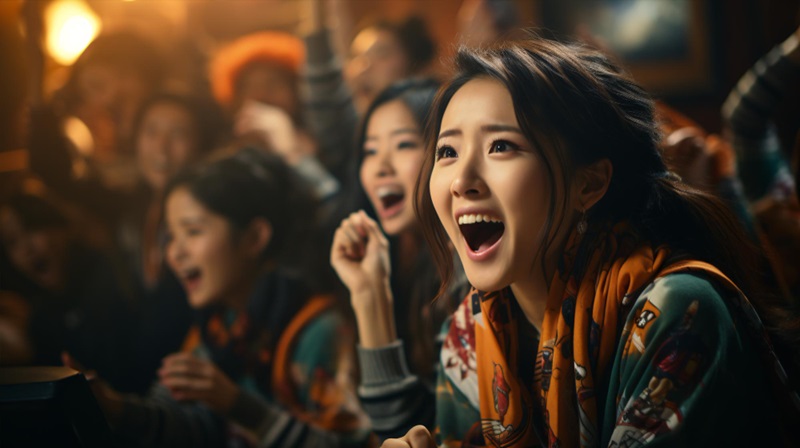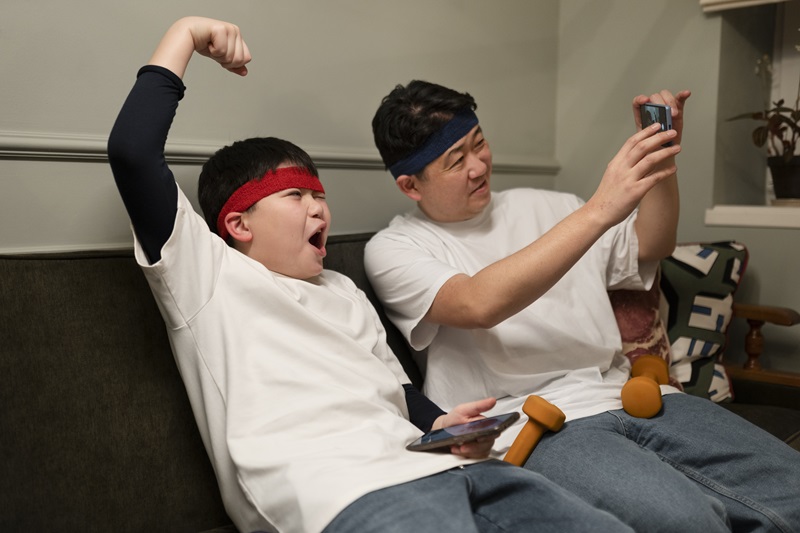Oshikatsu – Supporting your Faves!
Oshikatsu is a Japanese word describing a popular culture trend, increasingly taking hold in Japan. Although giving a first impression is unique to Japan, it is common across all countries. A good way to explain the activity is in terms of our own behaviour. Most of us, at some time in our lives, have devoted ourselves to following a favourite musician, sportsman, actor or fictional character. In more recent times, YouTubers and other influencers have many followers. Maybe you have followed your favourite’s activity online, added comments, gone to see them live or bought merchandise. All of this activity is in some small way, contributing to their success. If you have done any of the above, you have been engaging in Oshikatsu.

The word Oshikatsu, means the act of enthusiastically supporting someone that you have a sense of devotion towards. The word derives from ‘oshi’ (‘推し’), loosely translating to ‘someone or something one supports,’ and ‘katsu’ (‘活’), which means ‘activity.’ Hence, Oshikatsu is used to refer to the act of supporting someone or something one particularly likes. Typically entertainers such as actors, singers, idols (celebrity entertainers) and YouTubers are the object of devotion, but they can also be sportspersons, manga, anime, fictional characters, even animals, food and trains. Literally, anyone or anything can be an ‘oshi’ as long as one finds the feeling of wanting to support them. The devotion is not all positive, though, as excessive devotion can lead to burn-out, addiction and over-spending.
Oshikatsu activities have long been associated with ‘otaku’ (geeks) with an excessive interest in anime or manga. However, driven by the pandemic and the growth of online platforms, such as Twitter, YouTube and Instagram, encouraging interactions with faves, Oshikatsu has continued to grow from strength to strength. As such, Rakuten Insight Japan conducted an online survey, with 1,000 consumers from its own proprietary panel to explore Oshikatsu behaviours.
Digital Fuel for Oshikatsu
According to the survey, the most popular genre for Oshikatsu is ‘Domestic idols’, (32.4%), followed by ‘Musicians/Bands’ (24.9%), and ‘Manga/Anime characters’ (18.1%). The preferences for Oshikatsu differ by age group. Those in their 20s favour ‘domestic idols’, while those in their 50s & 60s favour ‘musicians/bands’. By gender, most men and women answered ‘Domestic Idols’ (29.6% & 34.3% respectively) and ‘Musicians/bands’ (22.2% & 26.8%).
There are clear signs that mobile phones, social media and general internet content have fuelled the Oshikatsu phenomenon. When asked how they are supporting their faves, more than half of those surveyed stated they are ‘watching video content’ (68.8%), ‘watching TV programs’ (61.4%), and ‘checking SNS’ (58.3%).

Young vs. Middle-Aged Fans
There are also indications that young people and middle-aged people tend to do things differently when it comes to Oshikatsu. This makes sense for a generation who are more accustomed to going to view live music compared to watching it online. Those in their 30s were more likely to ‘watch video content’ (75.9%) and ‘check SNS’ (64.5%). Those in their 50s and 60s are most likely to ‘watch TV programs’ (50s: 67.8%, 60s: 68.5%) and ‘participate in concerts (on-site)’ (50s: 52.1%, 60s: 56.2%).
The younger generation is more likely to spend money on Oshikatsu, with those in their 20s stating that they were more likely to ‘purchase goods’ (53.1%). By genre of favourites, purchasing goods was most likely for ‘manga’, ‘anime’ (68.0%), and ‘game characters’ (69.2%).
Oshikatsu is something which is generally to be shared and shouted about versus and secret guilty pleasure. 74.2% of people stated that they are ‘open about it (not hiding it)’. This is potentially a difference from the West, where some guilty pleasure means that it is only shared with a select few friends with a common interest.

Pandemic Influence: A Surge in Oshikatsu Activities
The Coronavirus pandemic fuelled the Oshikatsu phenomenon, perhaps due to the amount of time at home consuming content, and as a means of interacting with your faves at a time when it was less possible to go to see them perform live. 23.7% of people stated that they had started Oshikatsu as a result of the coronavirus pandemic. By genre, more than 40% of people who started Oshikatsu due to the coronavirus pandemic said their faves were ‘comedians’ and ‘K-POP idols’ (comedians: 42.9%, K-POP idols: 40.6%).
Although Oshikatsu marketing may lead to cynicism, it is perceived as a force for good by those in Japan. When asked whether Oshikatsu had changed their lives, 63.7% said it had changed for the better, and only 2.0% said it had changed for the worse. The reasons why their lives were changed for the better were stated as ‘I felt more positive,’ (57.8%), followed by ‘I was able to have the energy to do what I needed to do’ (34.4%) and ‘Feel less stress’ (31.9%). Presumably, the connections felt to their faves, bring a lot of pleasure and joy to stressful lives, especially during the pandemic lockdowns.

When reading about Oshikatsu it is tempting to consider it a purely Japanese phenomenon linked to popular culture like anime and manga. However, in this social media age, interaction with your faves is becoming more and more common. And really it has long been the case that young people are willing to spend time, effort, emotion and indeed money on their favourite actor, sportsperson, musician or brand. Re-considering your marketing activities and philosophies in the context of Oshikatsu may lead to more innovative ways to engage your followers.
Related articles: Oyasumi Nasai (Goodnight) – Sleeping behaviours in Japan, 2022 Impact of COVID-19 on consumer behaviour
For more infographics, updates and our original survey reports, follow us on LinkedIn or subscribe to our newsletter at the bottom of the page.